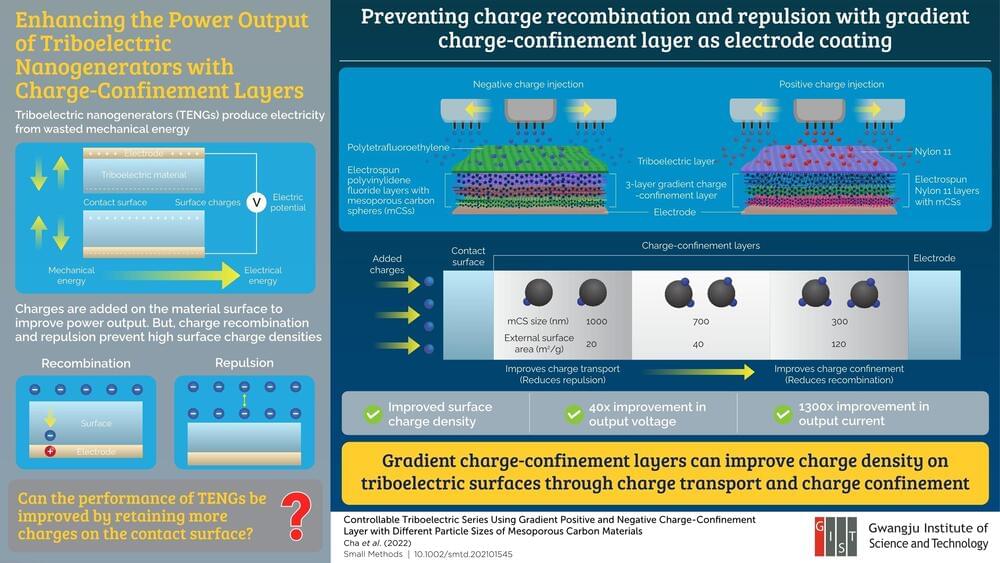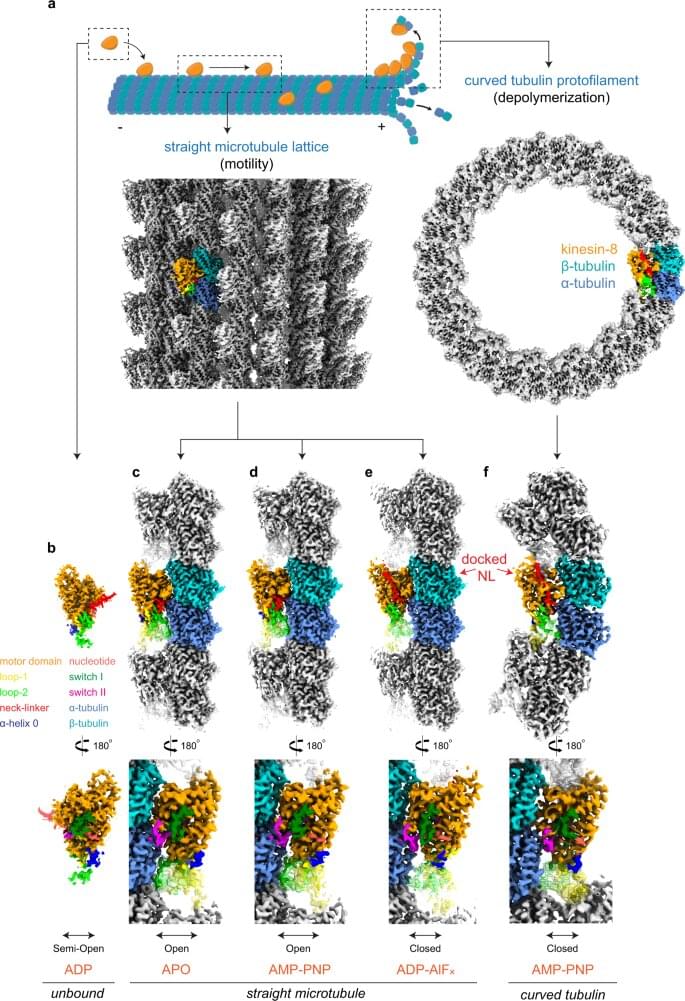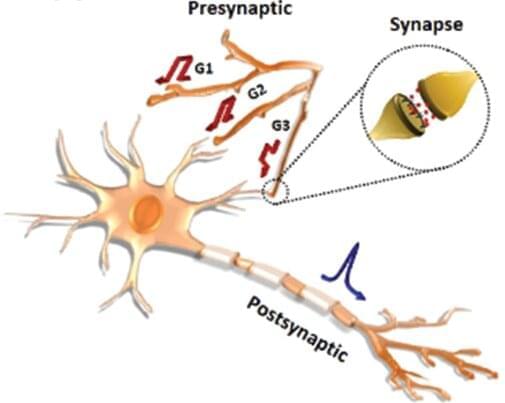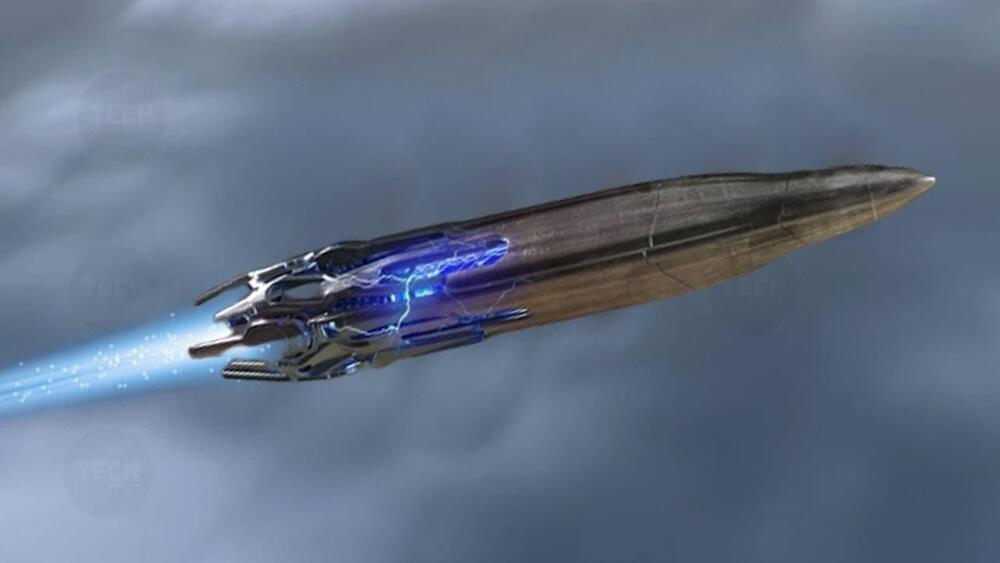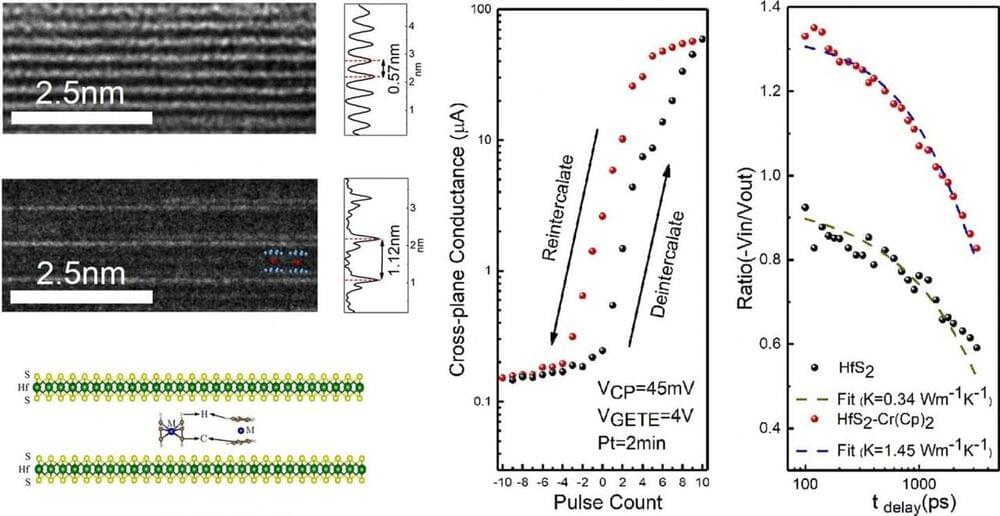Aug 16, 2022
New information on ‘gigantic jet’ lightning bursts that reach toward space
Posted by Dan Breeden in categories: climatology, satellites
A detailed 3D study of a massive electrical discharge that rose 50 miles into space above an Oklahoma thunderstorm has provided new information about an elusive atmospheric phenomenon known as gigantic jets. The Oklahoma discharge was the most powerful gigantic jet studied so far, carrying 100 times as much electrical charge as a typical thunderstorm lightning bolt.
The gigantic jet moved an estimated 300 coulombs of electrical charge into the ionosphere—the lower edge of space—from the thunderstorm. Typical lightning bolts carry less than five coulombs between the cloud and ground or within clouds. The upward discharge included relatively cool (approximately 400 degrees Fahrenheit) streamers of plasma, as well as structures called leaders that are very hot—more than 8,000 degrees Fahrenheit.
Continue reading “New information on ‘gigantic jet’ lightning bursts that reach toward space” »

